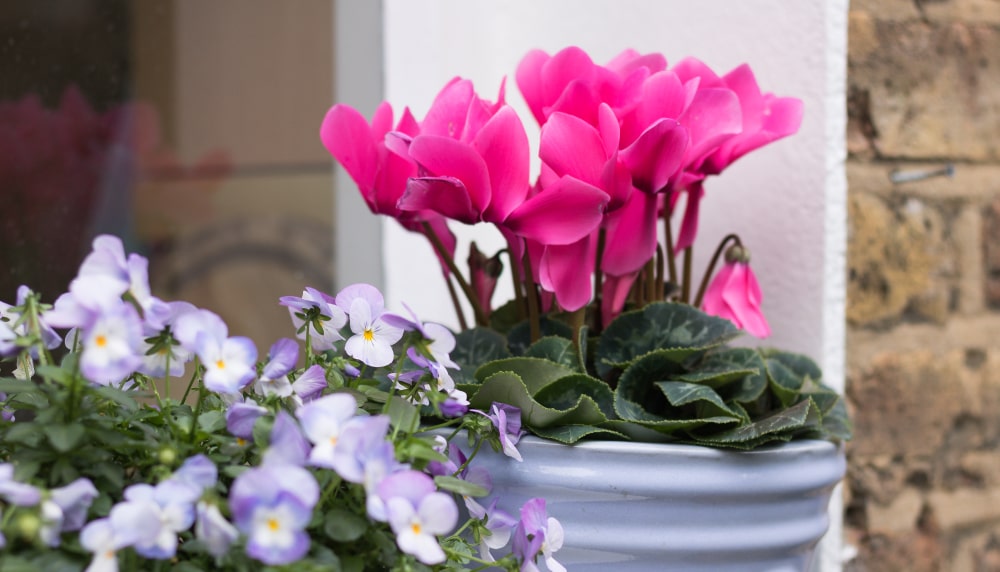FLORIST CYCLAMEN or “ALPINE VIOLET”
Without a doubt, the Cyclamen is one of my favorite, seasonal, blooming houseplants. Every year when the cyclamen plants arrive on our blooming tables it becomes nostalgic for me as I think about some friends who are no longer with us who would always have me pick out cyclamen plants for them.
The ones you will find in our greenhouse is known as florist cyclamen. Cyclamen are tuberous indoor winter-flowering plants. It is less hardy than the ones you can find offered outside in our nursery department. The florist cyclamen is a cool-season indoor bloomer that is available from now through the winter. The beautiful flowers resemble some orchids and come in reds, pinks, salmons, lavenders, and white. These hybrids of Cyclamen persicum, a native of western Asia and North Africa, also have attractive heart-shaped variegated leaves and come in both large-flowered and “mini” varieties.
GETTING THE MOST OUT OF YOUR CYCLAMEN:
- LIGHT: a very bright indirect light, cool window will be the preferred spot for your cyclamen
- TEMPERATURE: make sure to keep them cool. It will decline prematurely if kept above 70 degrees in a dry house. High heat and dry soil will also encourage mite infestations.
- WATER: when watering, make sure not to overwater or underwater. Allow the soil to surface-dry between waterings. Prefers to be moist with good drainage. Avoid watering the center of the plant, as water may stand on the tuber, potentially causing rot. The plant should not be allowed to go limp. Do not water the center of the plant as water may stand on the tuber, potentially causing rot. It is better to water from the bottom by watering the saucer so that the plant will take up the water from the bottom.
- HUMIDITY: average house humidity is fine.
- FERTILIZER: fertilize cyclamen every 3 to 4 weeks at half the strength of the recommended dosage. Overfeeding could result in more leaves but fewer flowers.
- DEADHEADING: pinch off the faded, dying blooms in order to maintain a fresh appearance.
- MAINTENANCE: remember, cyclamen grows from tubers and like all “bulb” plants it requires a dormant, rest period after flowering. Allow the plant to “die” back in March or April, and store the tuber in a dry, dark location for two or three months. Unfortunately, most people discard them once the plant stops blooming and the leaves begin to turn yellow. In March or April, this is a sign that the plant is preparing to go dormant. After three or four months of dormancy, you will want to repot the dormant tuber in fresh soil at the first sign of growth.
COME SEE OUR DISPLAY OF BEAUTIFUL CYCLAMEN PLANTS. THEY MAKE GREAT HOUSE WARMING GIFTS


As pretty as they are, you should have noted that all parts of the cyclamen are toxic to pets, & thus should be kept well out of reach.
Bonnie,
First, thank you for being an avid reader of the weekly blogs. You are absolutely correct in that cyclamen plants are toxic to pets. I will make it a point to include this information in my future blogs on house plants. Again, thank you for taking the time to send me your comment. Doug
You’re very welcome, & yes I do very much enjoy your blog!
Having cats who love nothing better than a chance to mow down houseplants & yak them up again, I know only too well what the consequences can be if those houseplants are even mildly toxic, so are very careful regarding what I bring into the house & where I “hide” it. But I also know how tempting it can be to see a gorgeous plant & impulsively bring it home without checking its pet effects first.